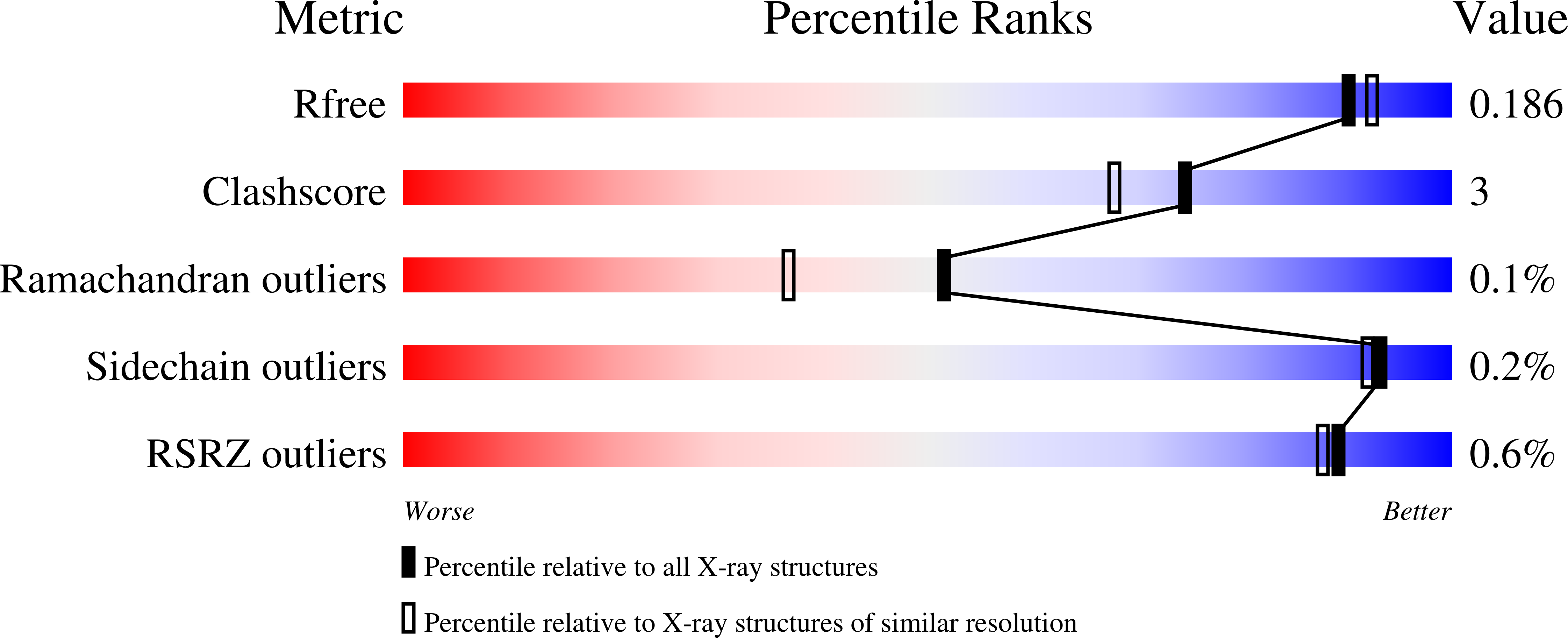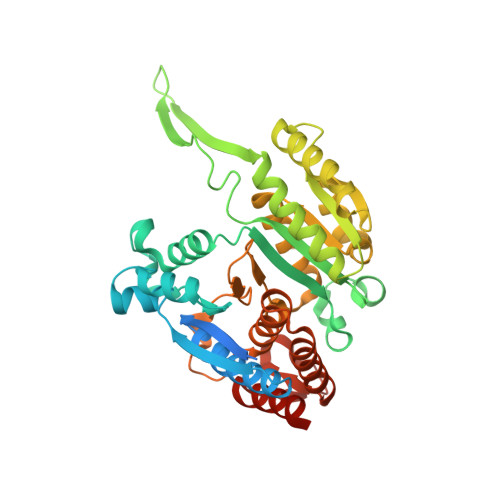Structure and Mechanism of Isopropylmalate Dehydrogenase from Arabidopsis thaliana: INSIGHTS ON LEUCINE AND ALIPHATIC GLUCOSINOLATE BIOSYNTHESIS.
Lee, S.G., Nwumeh, R., Jez, J.M.(2016) J Biol Chem 291: 13421-13430
- PubMed: 27137927
- DOI: https://doi.org/10.1074/jbc.M116.730358
- Primary Citation of Related Structures:
5J32, 5J33, 5J34 - PubMed Abstract:
Isopropylmalate dehydrogenase (IPMDH) and 3-(2'-methylthio)ethylmalate dehydrogenase catalyze the oxidative decarboxylation of different β-hydroxyacids in the leucine- and methionine-derived glucosinolate biosynthesis pathways, respectively, in plants. Evolution of the glucosinolate biosynthetic enzyme from IPMDH results from a single amino acid substitution that alters substrate specificity. Here, we present the x-ray crystal structures of Arabidopsis thaliana IPMDH2 (AtIPMDH2) in complex with either isopropylmalate and Mg(2+) or NAD(+) These structures reveal conformational changes that occur upon ligand binding and provide insight on the active site of the enzyme. The x-ray structures and kinetic analysis of site-directed mutants are consistent with a chemical mechanism in which Lys-232 activates a water molecule for catalysis. Structural analysis of the AtIPMDH2 K232M mutant and isothermal titration calorimetry supports a key role of Lys-232 in the reaction mechanism. This study suggests that IPMDH-like enzymes in both leucine and glucosinolate biosynthesis pathways use a common mechanism and that members of the β-hydroxyacid reductive decarboxylase family employ different active site features for similar reactions.
Organizational Affiliation:
From the Department of Biology, Washington University, St. Louis, Missouri 63130.
















